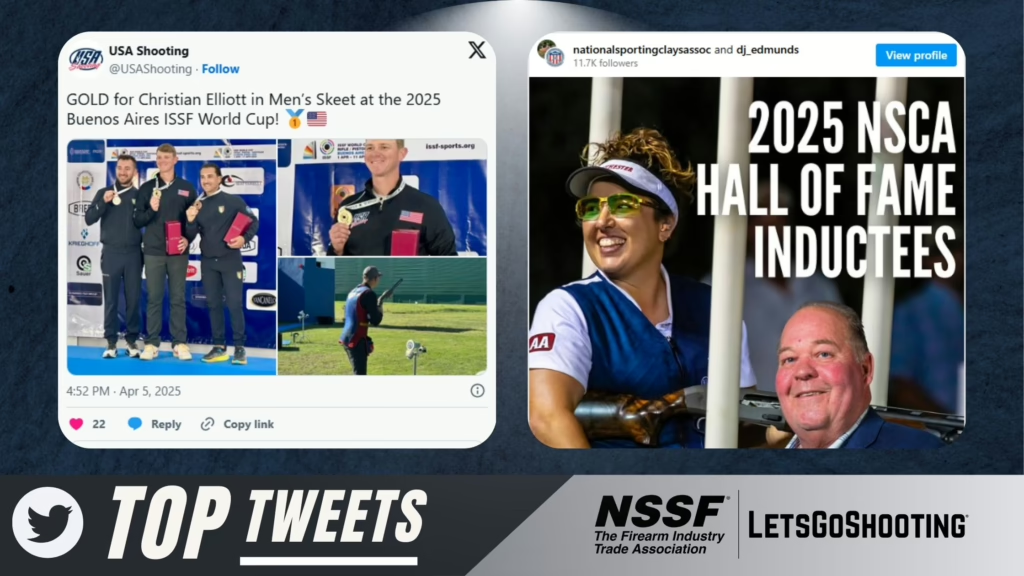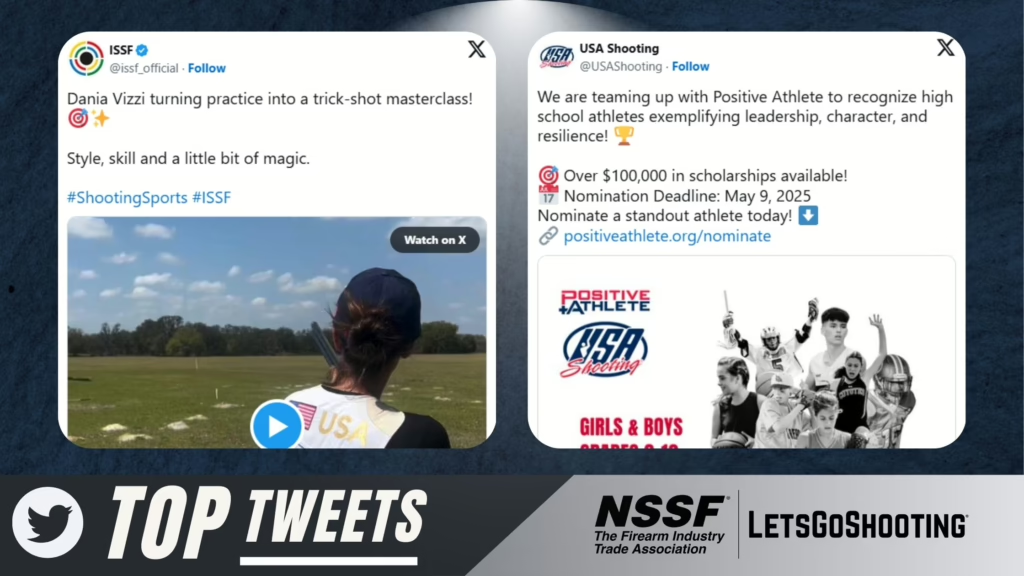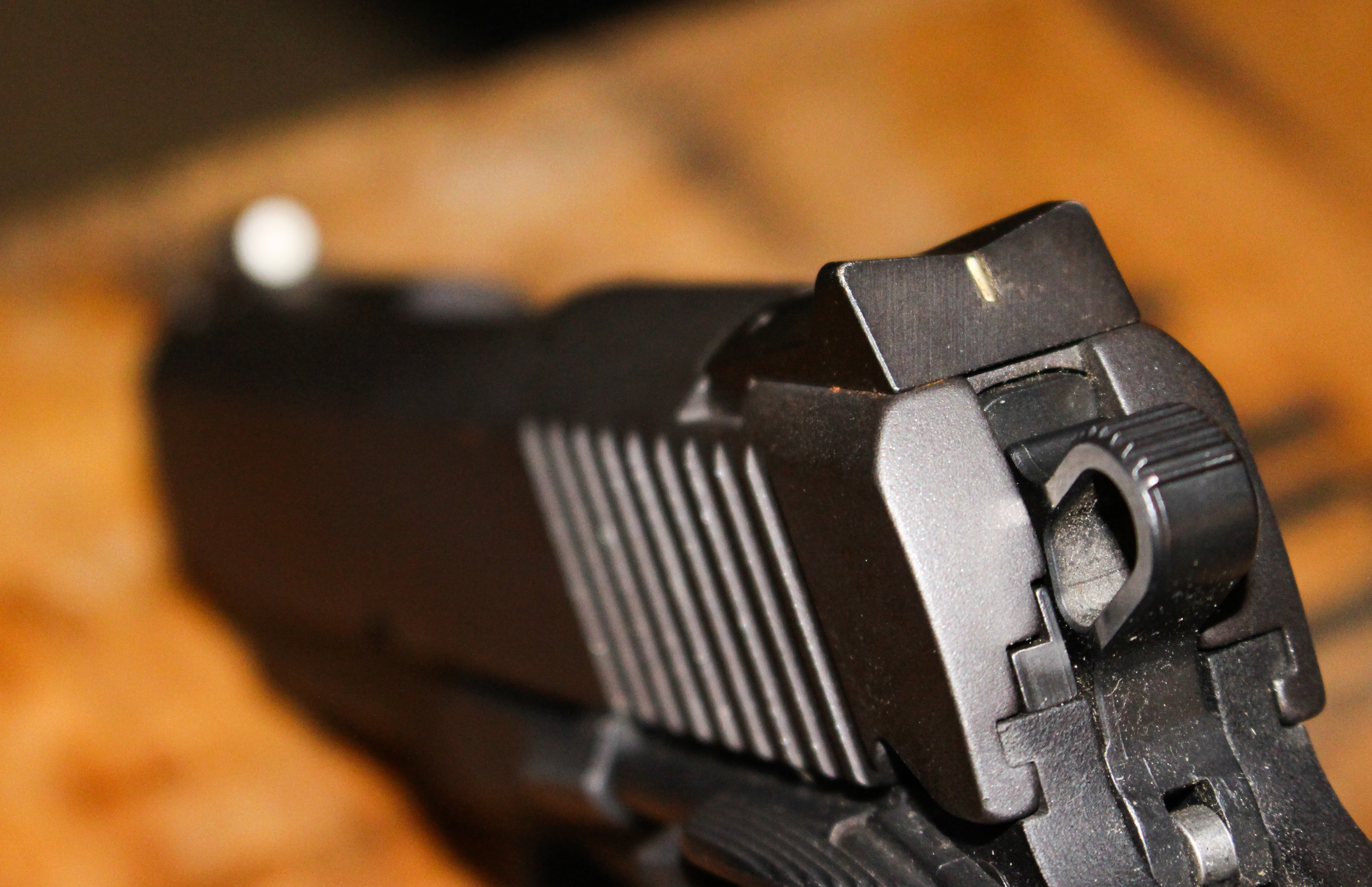
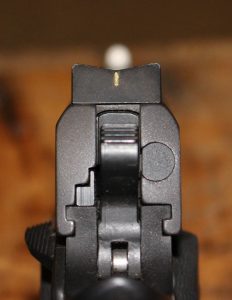
This Kimber Ultra Carry 1911-style pistol is a modern gun, but it wears a very traditional shallow-“V” rear sight.
No matter which style handgun is your favorite, one simple fact remains: The sights must allow the shooter to properly place the bullet where it is needed. Depending on your situation and your particular handgun, the sights may be a very simple affair or a rather complex system that can be fine-tuned to the way you shoot.
A Groove and a Blade
Early in the development of the revolving handgun, sights were a combination of a groove in the rear of the frame and a simple blade for the front sight. They were totally non-adjustable, and if the gun didn’t hit where you wanted it to, you had to grab a file and become a do-it-yourself gunsmith. Not your talent? You could adjust where your bullets impacted simply by changing the hold of the pistol—but that’s an inexact “science” at best.
You’ll still see guns made today with this kind of “no-sight” sight configuration. They are mostly the single-action “cowboy” guns such as the Ruger Vaquero and the Colt Single Action Army.
First Improvements
The Vaquero and current production Colt SAA are, of course, safer variations than the similar and ancestral guns of the Old West that came before them. But it was, in fact, the Colt Single Action Army, the “Gun that Won the West,” that first realized the advantages of adjustable sights. In 1890, Colt introduced its Flattop Target Model, featuring a fixed front sight blade and an adjustable leaf rear sight. Finally, no one needed to “hold over” a target or take out a file to hit where they were aiming.
Many of the early auto-loading pistols such as the single-action Model 1911 used this same kind of thin, blade-style front sight with a slim “U”-shaped groove rear sight, and you’ll find this same type of sight on many of today’s classic revolvers. They are fine sights, capable of great accuracy, if the light is good.
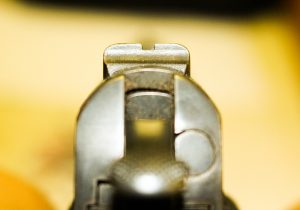 |
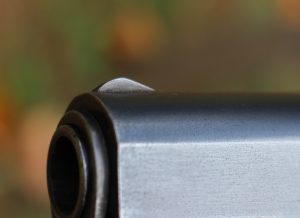 |
| Rear sight of a vintage WWII 1911 pistol. | Front sight of a vintage WWII 1911 pistol. |
Over time, the handgun sight evolved into more of a block-style sight, which is easier to pick up on the target and allows for quicker target acquisition. I like this style of sight, as it seems to be a little more “bold,” if you will, and while it may not be as fine a sight as the thin blade of the earliest revolvers and autoloaders, they are definitely easier to use if you have older eyes. My Smith & Wesson Model 36 has these style sights, and they work rather well with the short sighting radius of the snub-nosed revolver. Combine this style with a rear sight that is fully adjustable for windage and elevation and you have one of my favorite styles of handgun sights, just as the ones my sweetheart Ruger Blackhawk wears. I consider them a good choice for a hunting handgun, as well for a personal-defense gun.
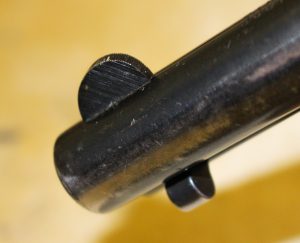 |
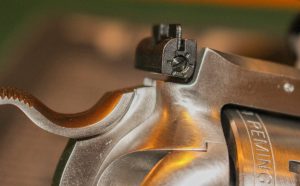 |
| Front sight of a Ruger Single Six revolver. | An adjustable rear sight of a Ruger Super Blackhawk revolver. |
Light ’Em Up
The use of tritium and fiber-optic sights, used to enhance the speed of target acquisition in low light situations, has become very popular, and with good reason. As far as a traditional-style sight goes, a set of tritium or fiber optic sights—consisting of two small circles set into the rear sight and one circle set onto the front sight, in either white or contrasting green and orange—is really hard to beat. The small circles are easy to align and are easy on the eyes, sort of just naturally aligning. Most of these “night sights” concentrate what existing light there is in any low-light situation, yet yield a minimal amount of illumination even in complete darkness (i.e., they don’t illuminate you behind the gun or produce that shimmery “halo” effect like a streetlight, which would make the sights hard to use). They are available in just about any configuration, including a rear sight that is a wide, shallow “V” such as you’d find on a good safari rifle and which aligns oh-so-naturally.
Fiber optic and tritium night sights are just some of the group of sights that are called “replaceable sights.” They are intended for use on most modern guns, whereby their factory sights are attached to the gun via small screws and pins or a combination of both. They are, without a doubt, a great improvement over the no-sight sights of the Old West guns, and their vast variety from rear sights that adjust vertically and horizontally and have dozens of notch shapes and widths to front sights that are thick, thin or have a fiber optic insert—means that today’s shooter can experiment with all sorts different brands or configurations until he or she finds the combination that works best.
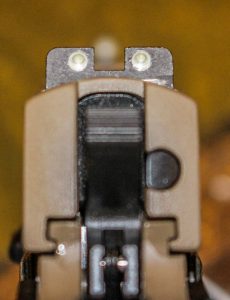 |
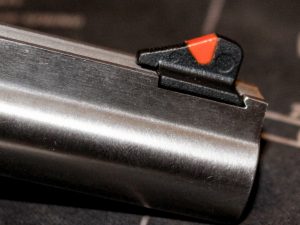 |
| Rear night sight on SIG Sauer P238 pistol. | An orange plastic insert on this revolver front sight can make it easier to see. |
https://www.letsgoshooting.org/2020/07/17/traditional-vs-electronic-pistol-sights-is-it-time-to-make-the-move/


